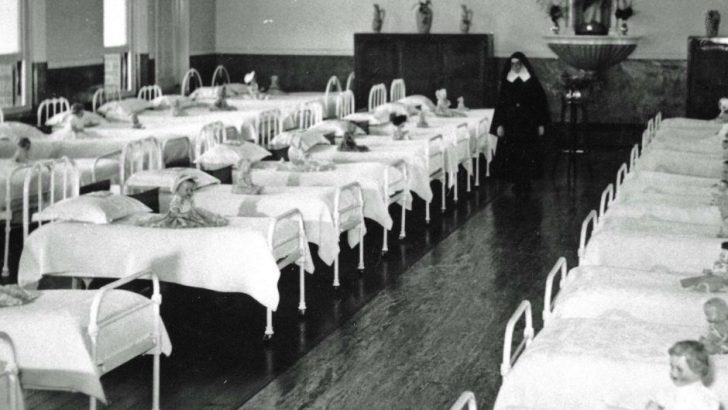Since I am of the generation who grew up in Ireland in the 1950s, I’ve received messages on social media saying I – or we – must have been aware of the neglect, malnutrition and cruelties of the mother and baby homes which have been brought to light this week.
Astonishing
It may seem astonishing to say this, but I didn’t even know that such institutions existed until a single friend of mine stayed in one for a time in the 1970s. As it happens, the home itself was in the north of England, not in Ireland. She chose to go there herself because she didn’t want her father in rural Ireland to know about her pregnancy, although she confided in her mother. Her father was a good man who held public office, but he had high moral standards and she couldn’t bring herself to tell him of the situation. From what she told me, the home ‘for unmarried mothers’ was a bit basic and there were some restrictive rules, yet it was useful to her while she settled herself, and she moved on – keeping and raising her child herself. But her father died without knowing about his grandchild.
This must have been a not unusual situation in its time, and almost certainly more anguishing 20 years previously, when the unmarried mother really was stigmatised.
But it now rather shames me to think that I had no idea that such institutions existed: shaming that middle-class society lived in such a bourgeois bubble that probably didn’t wish to know about what was hidden. Although I certainly remember compassion for ‘the poor’, and charity being exhorted. The marginalised then meant the travelling people, whose conditions were often dire.
The nearest we came – in the Dublin 4 milieu where I grew up – to any mention of the unmarried mother was some vague gossip about someone who ‘had to get married’, which was in itself something embarrassing. ‘Having’ to get married was the euphemism for a pregnant bride, and it was the only remedy that the respectable middle-classes accepted for an out-of-wedlock pregnancy. Get hold of the father and make him do the decent thing. There were jokes, too, about ‘the shotgun wedding’.
Report
In a wide-ranging report in the Irish Independent on Tuesday, Nicola Anderson wrote: “We have always known of [the unmarried mothers’] suffering but we turned our eyes and did nothing.” Eyes were certainly turned from what was considered, at best, an unfortunate situation, and at worst, a social disgrace, we didn’t always know about the plight of these women. And the newspapers of the time didn’t inform us, either.
We now need to know a lot more – not just of the findings of the commission on the homes, but more details of how and why each individual woman was committed there. Was it poverty? Social – including Church, and priestly – pressure on the family? Were there other social problems involved? Or was it a range of factors which added up to a very wretched and distressing picture indeed?
Facing up to cruel facts
The death toll in these homes was shocking – one in seven infants died, which added up to 9,000 deaths between 1922 up to 1998.
Infant mortality generally was a huge problem in Ireland in the early years of the state, J.J. Lee wrote in his magisterial Ireland 1912-1985. In a 1927 Poor Law Report it was noted that Dublin’s infant mortality rate was one of the worst in Europe – 120 infants per 1,000 died. The rate of infant mortality, particularly in inner-city areas, did not improve substantially for another 30 years.
A Scottish doctor I know, now in his 90s, remembers being a young houseman in the Coombe in the 1940s, and meeting with so many stillbirths and infant deaths. Yet what impressed him was the stoical acceptance of so many of the Dublin mothers.
***
“Anyone who proposes to do good must not expect people to roll stones out of his way – but must accept his lot calmly even if they roll a few more upon the way.” This week’s inspiring quotation from Albert Schweitzer, theologian, physician and Nobel prize winner.


 Mary Kenny
Mary Kenny
